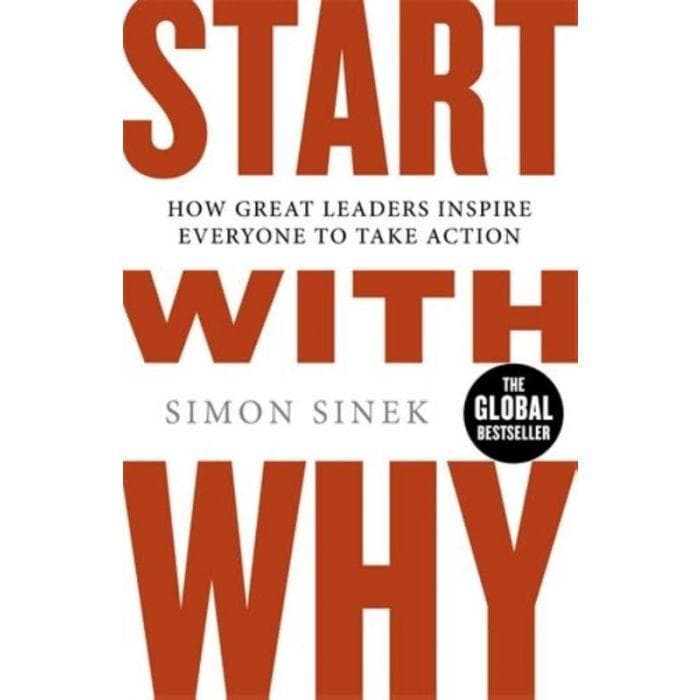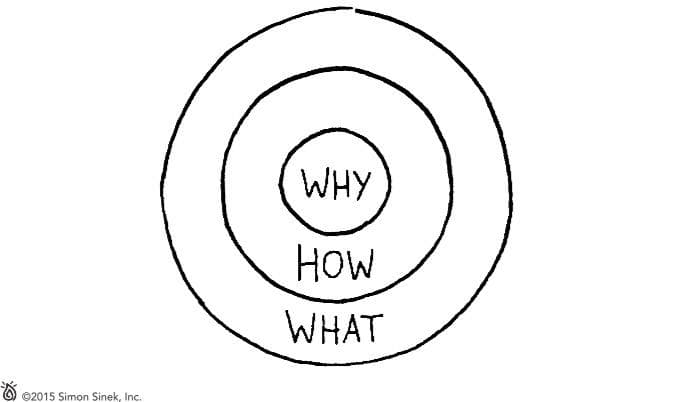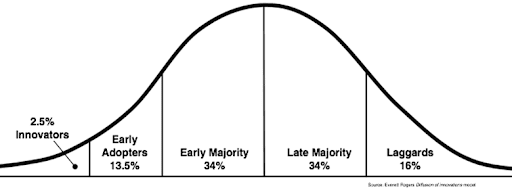It all starts with why
May 21, 2020
Over the last few years, I came across the book 'Start with Why' by Simon Sinek several times in different ways. The title made me very curious, because it sounded so simple to me. One of the strongest examples Simon Sinek uses is that of Martin Luther King and how we started the civil rights movement in the United States.

After having read the book, which is filled with great examples of businesses that either flourish or fail in terms of leadership, I felt that many of the findings from the book can not only be used to reflect on the company I work in, but also in my own life to make choices in what is worth my own time in my personal life.
The Golden Circle
One of the concepts that is introduced in this book is the Golden Circle, which is a way to understand how great leaders inspire others surrounding them. For most of these inspiring leaders, they communicate in this way without thinking too much about it. For those who want to learn how to communicate in this way, you can use the same thought model.

The essence of the circle is that you have the why, the how and finally the what.
The what is simply what you do. This could be the product you make or the service you deliver.
The how describes the way you or your company go about producing or selling your product or service. This part usually contains the values you or your company have to do what you're doing, such as 'customer-friendliness' and also the way you organize yourself around what you're doing.
The why is about the motive or belief you or your company has in the first place. This seems to be really hard for people to put in words, and is oftentimes phrased in terms of results (e.g. earning money) instead of the reason why you are doing this (and will keep doing this for a longer period of time).
Most companies seem to start with what is clear, for example the product they deliver, and then work from there towards the why, which tends to be more vague (and more importantly, phrased in terms of what they are doing). Simon Sinek strongly suggests to do the opposite, so starting with the why. He argues that people don't buy what you do but why you do it, which is a phrase that is repeated strongly several times in the book.
What struck me most in the book: When a company is advertising, the likelihood of leaving a lasting impression is higher if the company is able to convey their why in a clear way, even if the advertisement showcases a new product or service, making it also more likely that consumers who believe in the same why are interested in buying their product. If the advertisement fails to be clear about the why, then consumers will compare the product against its competition based on factors such as features and price, which will make it harder for consumers to feel good about their purchase, regardless whether the product is superior to others or not. If people don't buy your story, they won't buy your product either (or at the very least not be loyal to your company for further purchases).
The biology behind the Golden Circle
What made the book even more interesting for me is that Simon Sinek explained why the explanation applies to human behaviour. It helped me relate this book to other books, such as 'Breaking the Habit of Being Yourself' by Joe Dispenza (about which I wrote another blog post).
The part in our brain that is able to deal with the what is the neocortex, which allows us to reason and think analytically. Also, the neocortex is where language (being able to put things in words) resides. The neocortex as the name hints is the most recent evolutionary addition to the human brain.
The how and in particular the why can also be mapped to particular parts in the brain. These two perspectives reside in the so-called limbic brain, which is a part of the brain that all mammals have and which allows us to feel emotions, forms our personality and allows us to remember events based on memories.
What we do is usually easy to put in words, but why we do it can be especially hard because we try to put a feeling into words, which is not straightforward given that the part of the brain that deals with feelings is not closely connected to the language center of the brain. Whenever something we do feels right, we often talk about it being an instinctive decision, which is made by our limbic brain.
The Law of Diffusion of Innovation

Simon Sinek references to the Law of Diffusion, originally described by Everett M. Rogers. This so-called bell-curve explains that there are different groups of people to take into account when entering a market with a product. The innovators and pioneers are actually the groups you want to aim for first, since if these people believe what you believe, they would take for granted certain hurdles such as a higher price.
Simon Sinek points out that many companies have made the mistake of aiming for the later groups in the bell curve, which can be quite costly and inefficient. To be successful, a company should start communicating their why, which will be considered as the identity of the company. The products the company sells should follow clearly and consistently from this identity. Whenever consumers try out these products because they feel and believe it will help them in their life, it will also become easier to reach the later groups in the bell-curve.
How companies should organize themselves
Usually there should be a couple of people in the organization that can convey clearly why the company exists and keep inspiring every employee of this, especially in times of transition. Usually the CEO of a company deals with this. Simon Sinek mentions that many companies have a hard time when their first CEO leaves, because the why might not be the same anymore, or the new CEO might not be credible when sharing the original belief.
In most companies, there are multiple people taking care of the how. Obviously, there is no CEO that can do everything all by himself, so usually he has a strong connection with the people that know how to organize groups, business units or teams, and how to translate the belief in such a way that it can be applied by all employees in their day-to-day job.
The larger a company grows, the more attention should be paid on making sure that the message is still clearly reaching every employee. Eventually all actions performed by employees should be consistent with the philosophy that identifies the company. Only then will customers feel that the company is legit, and only this will make it more likely that customers will stay loyal to the company, even if other products might be technologically superior or cheaper than theirs.
After having read the book, I can recognize some of these patterns in companies around me. Also, I see clear benefits for applying the same strategy (starting with why) to my own personal development as well as when coaching my colleagues. Actually, my own why became really clear when reading this book! I can truly recommend this book to anyone interested in the topic of leadership and inspiration.

